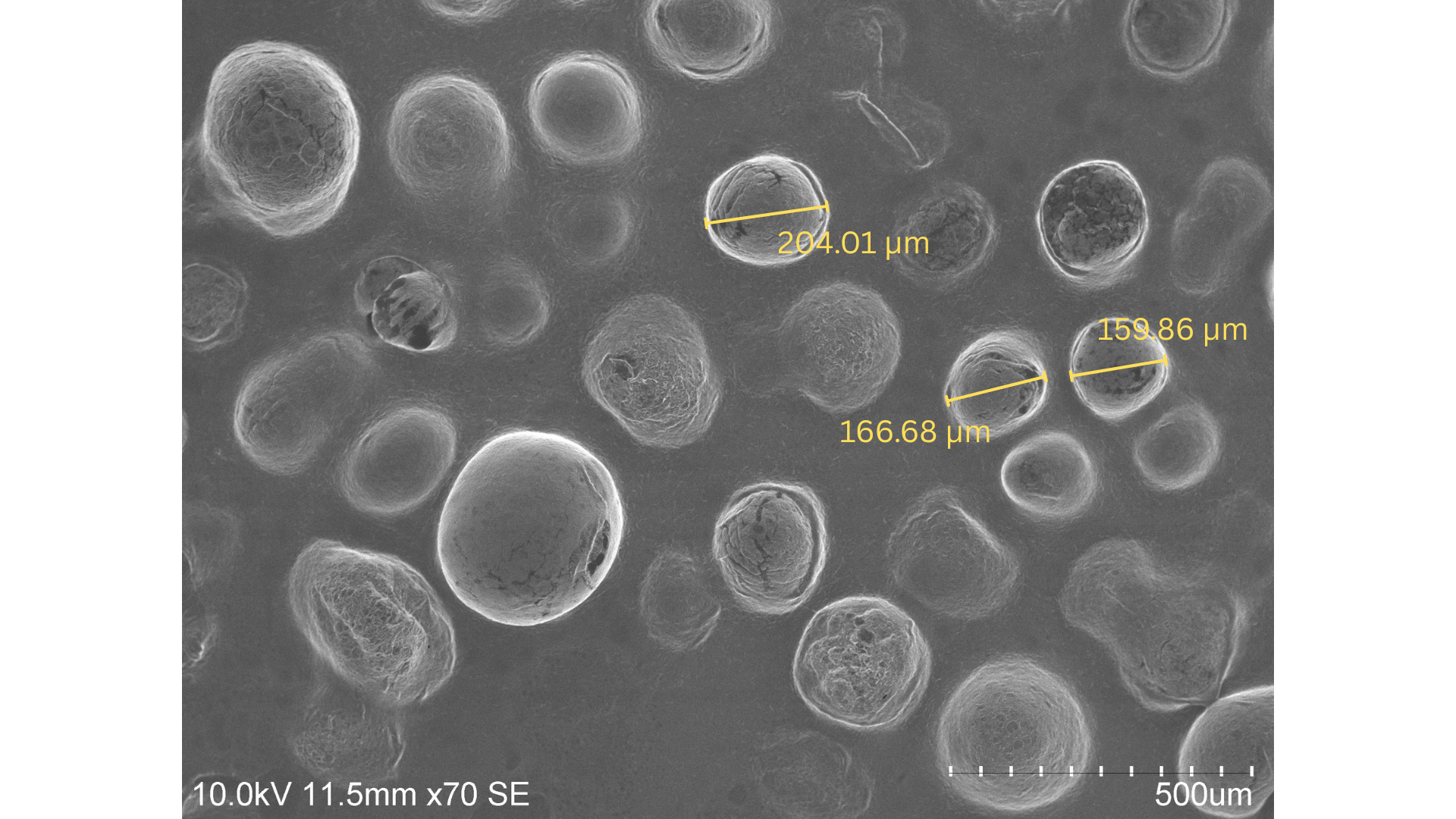VOLUME 18 NUMBER 2 (July to December 2025)

SciEnggJ. 2025 18 (2) 336-346
available online: 30 September 2025
DOI: https://doi.org/10.54645/2025182CGN-77
*Corresponding author
Email Address: cbgomez@up.edu.ph
Date received: 30 April 2025
Dates revised: 17 June 2025 and 18 August 2025
Date accepted: 20 September 2025
ARTICLE
Formulation and characterization of bixin-loaded microparticles using ionic gelation method
University of the Philippines Manila
2Institute of Pharmaceutical Sciences, National Institutes of Health,
University of the Philippines Manila
3Laboratory of Materials, Department of Physical Sciences and
Mathematics, College of Arts and Sciences, University of the
Philippines Manila
Formulations of bixin-loaded chitosan-tripolyphosphate hyaluronic acid-coated microparticles (BX-CS/TPP-HA MP) were prepared using the ionic gelation method. Encapsulating BX in MPs aims to address BX’s poor solubility and dispersion in aqueous media. The effects of BX concentration, CS:TPP ratio, and HA concentration on the formulation of BX-CS/TPP-HA MPs were investigated using a one-factor-at-a-time approach, with particle size, polydispersity index (PDI), zeta potential, encapsulation efficiency (EE), and loading capacity (LC) as the quality attributes. To further characterize the MPs, scanning electron microscopy (SEM) and Fourier transform infrared (FTIR) spectroscopy were conducted. A formulation of BX-CS/TPP-HA MP containing 9 mg/mL BX, 4:1 CS:TPP, and 0.3% w/v HA resulted in less than 1000 µm particle size, acceptable PDI, and zeta potential within the range -20 to -40 mV, as determined with a dynamic light scattering analyzer. The results of the EE and LC confirm the successful BX loading. SEM analysis revealed spheres with sizes ranging from 150 to 400 µm, indicating the microparticulate nature of the BX-CS/TPP-HA. The FTIR spectroscopy results further confirm that BX was successfully loaded into the BX-CS/TPP-HA MPs. The results of this formulation study can be utilized for addressing formulation issues related to BX’s solubility and stability in a dispersed system.
© 2025 SciEnggJ
Philippine-American Academy of Science and Engineering